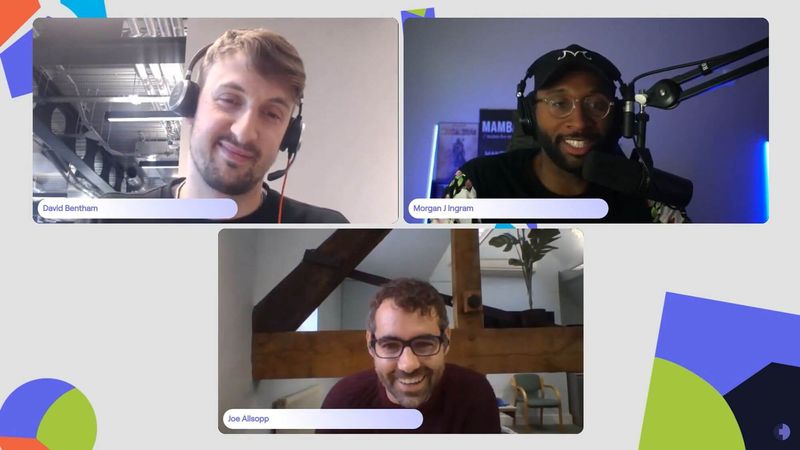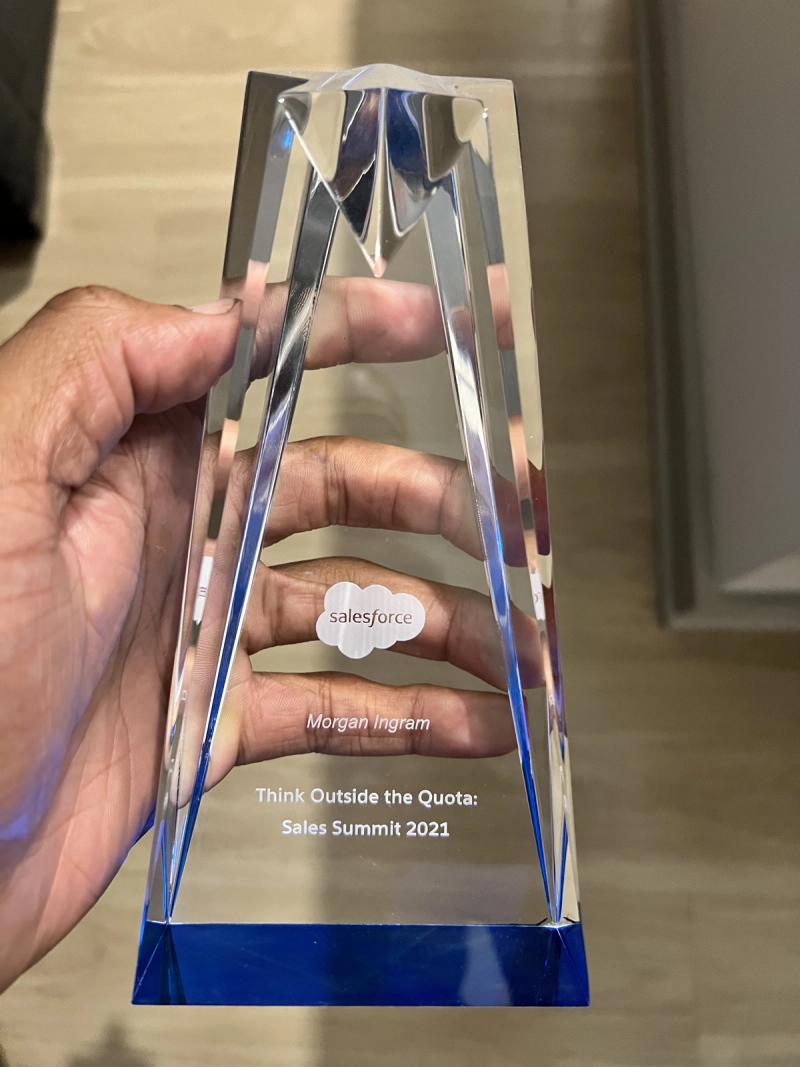The Sales Team Has Spoken: 3 Tips for Improving Webinars

Maximize Your Marketing ROI
Join 10,000 other marketers already getting the best tips on running engaging events that boost pipeline and create raving fans.
Oh no. Not another webinar.
Hold on! Bear with me: I know webinars have become the most tedious activity ever since COVID happened, and we were thrown into this virtual environment.
However, I have done over 250+ webinars, been an SDR who followed up after the webinars, and moderated several sessions. Based on my experience working in sales, webinars don’t have to be hard.
You just need a strategy to be impactful.
Here is how you can make your virtual event effective from a sales perspective.
Define your objective (and its impact on sales) before you start
Before you host your webinar, you need to have an objective in mind. Not an “I want to pitch my product, blah blah blah” objective—I'm talking about what you really want to achieve with the webinar.
You need a clear understanding of why you are hosting the webinar and what impact it will have on your sales cycle. What results will you expect from it?
Now, you might be thinking, “Why would this matter to me as a marketing professional?” Let me tell you why: Webinars are not just about leads.
You can host a webinar for its own sake, for fun, and for the experience. But what would happen if you’re a sales professional and you don’t have a specific objective in mind for the call? What would happen if you are a marketer and don’t know the outcomes you're looking for from the marketing campaign? It would be a complete disaster.
Instead, design the webinar with a specific, actionable objective in mind, and build from there. Some of those objectives could be the following:
- Pointing people to an in-person event that you are hosting
- Promoting a new product launch
- Bringing customers on a webinar to elevate the customer's voice
Use the webinar as an opportunity to provide value to your audience with a clear focus on what they are learning and what you want to achieve.

What is value? Three things that make a webinar great
Now that we have defined what we are looking to do before the webinar, let’s talk about what you need to do on the webinar.
Based on my experience, there are three things that make a great webinar:
- The attendees get something valuable from it.
- The moderator and panelists are engaging.
- You, as the marketer, are able to develop quality conversation starters for the sales team after the event. This helps your salespeople go into conversations with more context around what matters to your customers.
1. Bring the attendees value
Now, let's talk about number one. I like to call it "event effectiveness" to focus on bringing value to the attendees.
People show up to learn new things to be better at their jobs. So, if your webinar is product-focused, people will tune out VERY quickly. Focus on the webinar being value-focused first, so you can acquire new customers and expand your customer base.
To prep, have a quick call before the webinar to ensure everyone knows what type of outcomes (aka takeaways) they are looking to address and the major talking points. Then, your content should be focused on driving those outcomes, so when someone posts about this webinar or tells their colleagues, they know exactly what they are learning.
Remember to keep your outcomes specific and direct, and, ideally, have three key outcomes you want to drive towards in the event.
Focus on the value you bring first, and then people will talk about your product. That’s event effectiveness.
2. Find engaging panelists and moderators
The second thing that I want to talk about is finding moderators and panelists that are engaging.
When you are doing the webinar, something to consider is making the event lively, fun, and interactive.
That doesn't mean that this needs to be a comedy show.
However, you need to find ways to include the audience in the conversation. One of my mentors said something that I believe we all need to internalize as marketing and sales leaders:
"We need to have conversations instead of presentations."
Most people, when they do a webinar, treat it like a presentation, which typically leads to the audience tuning out, checking their email, or being on social media.
What we want to do to avoid this scenario is to provide engaging prompts so that the audience feels like they're a part of the conversation.
For example, one of the best things that I have done on webinars is asking a quick “pulse check” question to the audience. An example of a question I might ask is “Have you found this impactful so far?” or “What have you learned so far that has been helpful?”
Ask these questions, and have the audience put the answers in the webinar chat. Get the audience to type something, so they feel like they're included in the conversation, which helps them feel more engaged, leading to higher event effectiveness.

3. Focus on quality conversation starters, not volume
The third thing that will make a great webinar is that, as a marketer, you also start thinking about the webinar in terms of revenue.
Ask yourself, “What will make this a good follow-up experience for my SDRs or AEs?” There's always a battle between marketing and sales on who provides the best leads, and that’s something we want to avoid completely for the sales team. And a great webinar can help with that avoidance.
It's not all about just the number of net new leads you can provide the sales team; it's providing them with the right insights into the right leads so they can follow up appropriately.
One of the best things you can do as a marketer is to give the sales team the highlights from the webinar and the key personas that have been interacting the most with the content lately.
For example, as a sales rep, I worked with the marketing team to capture 3-5 highlights from each webinar so that we could use them in our follow-up emails. We also reviewed the highlights to identify the key personas that we absolutely needed to reach out to after a webinar. This created a very good relationship with marketing, and we were able to coordinate together and host great events.
Here is an example of how I would approach that email if it was someone who attended the webinar vs. a person who didn't attend. For the person who attended, I might say, "Hey ((name)), noticed you attended our webinar. Our favorite takeaway was XYZ. What was yours?"
For anyone who didn't attend, I'd say, "Hey ((name)), I know things are super busy nowadays, and it looks like you couldn't attend our webinar. No worries. Here are three takeaways from today's session. Do any of these resonate with you right now?"
Keep your follow-up emails brief yet with a crisp call to action.
Another thing that you can do with follow-up is send them a video. What I mean by that is if you have someone internal on the webinar, assign them to create a recap video and send it out to your prospects.
The recap video could be really enticing if you have an executive on the webinar, as typically, future clients will be really impressed by the high-quality turnout and might see it appropriate to give a response where they wouldn’t have otherwise.
Oh, wait—one last quick thing that can be helpful. Marketing should create a list of related content for sales to use during their follow-up conversations. This makes it easier for the sales rep to be personalized and provide the relevant context in their outreach.
Ultimately, if you follow these steps, you will have a great webinar and your sales team will absolutely love you for the follow-up information that you provided them.

Follow up after events with speakers and presenters
However, those are not the only people who we want to love us. We need to ensure that we have a good post-event follow-up to thank the speakers and moderators as well.
One of the best things you can do is send a gift or a quick thank you video to the speakers.
A thoughtful gesture goes a long way. I have done a ton of virtual events. I would say only about 10-20% of the time have I ever gotten a thank you video or gift after the virtual event is over.
You can use a tool like Loom or Vidyard for the videos and a tool like Reachdesk to send the gift. No need to overdo it on either of these. The videos should be about 10-30 seconds, and the gift can be super lightweight, like an Amazon gift card.
Make the extra effort, and your speakers will make the extra effort for you when you have to ask them for something again!
Focusing on these steps improves your sales cycle
Now we are at the end. Hopefully, you enjoyed this journey on how to prepare for your webinars more effectively and how you can see it from a sales perspective.
To recap: Make sure to prep for your webinars with clearly defined objectives and then focus on bringing value to your audience. Finally, after the event, huddle with sales to transfer information and follow up with your speakers to thank them.
I have seen strong results firsthand by following these strategies. I've experienced better lead quality overall, lending itself to faster sales cycles. I've noticed an improvement in the alignment between the sales and marketing teams. I've also found a better overall experience for audience members, leading to highly engaging webinars.

Stay In Touch
Platform
Resources
Company
Community
© 2025 Copyright Goldcast, Inc. All rights reserved.



 Upcoming Events
Upcoming Events Event Series
Event Series On-Demand Events
On-Demand Events

